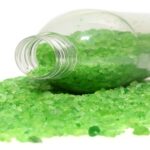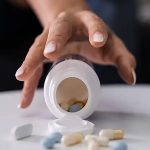Global Label-Free Detection Market
As stated in our extensive report, the Global Label-Free Detection Market accounted for USD 540.2 Million in 2022 and is projected to reach a value of USD 1058.4 Million by 2030.
Label-free technology provides a considerable benefit by maintaining the ligand’s natural structure and biological function. Additionally, it furnishes researchers with insights into the underlying biology that are more physiologically relevant than synthetically modified ligands. This technology empowers researchers to conduct analyses through inventive methods that yield only endpoint results. In contrast, labeled approaches carry the risk of introducing foreign elements, potentially deactivating the biomolecule of interest or reducing its interaction capabilities. As awareness of the merits of Label-Free Detection continues to expand, manufacturers are actively advancing the frontiers of sensitivity and throughput.
Collaborative initiatives between governments and private entities to host seminars and enhance end-user awareness regarding the advantages of adopting Label-Free Detection methods are anticipated to bolster market growth. Furthermore, ongoing endeavors by businesses to pioneer innovative Label-Free Detection technologies will be a driving force behind market expansion. Conversely, the substantial equipment costs associated with Label-Free Detection may impede the market’s growth. Additionally, a shortage of expertise among end-users and limited awareness regarding the manifold benefits of Label-Free Detection techniques may serve as barriers to market expansion.
Click To Get a Free Sample On the Research Study

Key Factors Influencing Global Label-Free Detection Market Growth
The growth of the global Label-Free Detection market can be attributable to the following:
- Label-Free Detection methods have gained significant popularity in the pharmaceutical industry for drug discovery and development. Analysing molecular interactions without labels or tags in real time has enabled high-throughput screening and efficient drug candidate selection. For instance, Biacore, a leading Label-Free Detection system, is widely used for kinetic analysis of interactions between drug candidates and target molecules, enabling the identification of potential drug candidates.
- Proteomics research, which involves the study of proteins and their interactions, requires susceptible and accurate detection methods. Label-Free Detection techniques offer real-time measurement of protein interactions, enabling researchers to gain valuable insights into protein functions and their role in diseases. For instance, Meso Scale Discovery (MSD) offers a label-free electrochemiluminescence platform for protein analysis. This technology enables sensitive and multiplex detection of protein biomarkers, supporting proteomics research.
- The shift towards personalized medicine requires developing advanced diagnostic tools and techniques. Label-Free Detection methods are increasingly used to identify and quantify biomarkers in patient samples, facilitating the development of personalized treatment strategies. For instance, Quanterix’s Simoa platform utilizes digital immunoassay technology for ultra-sensitive detection of protein biomarkers. This label-free approach enables the detection of low-abundance proteins in patient samples, aiding in the early diagnosis and monitoring of diseases.
- Academic researchers increasingly use Label-Free Detection methods due to their versatility, affordability, and ease of use. These techniques support various applications, including molecular biology, cell biology, and biochemistry, driving market growth. For instance, surface plasmon resonance (SPR) technology, such as the BiOptix SPR platform, is widely adopted in academic research for label-free analysis of molecular interactions. It allows researchers to study various biomolecular interactions in real time, contributing to scientific advancements.
North America Region to Express the Largest Market Growth
North America holds a prominent position in the worldwide Label-Free Detection market, primarily driven by technological advancements and substantial government investments in the region. The rising disease prevalence and the expansion of drug discovery initiatives further propel the market’s growth in this region. Notably, in 2021, the United States alone witnessed approximately 121,690 registered clinical studies, as reported by the National Clinical Trials Registry (NCT). Additionally, collaborations between pharmaceutical firms and academic institutions and numerous partnerships involving pharmaceutical and biotechnology companies are expected to contribute significantly to the market’s expansion.
The Asia Pacific region is predicted to expand at the greatest CAGR during the forecast period. Asia, encompassing nations such as China and India, is poised for remarkable growth, with the highest projected growth rates. As a result of strict regulatory standards in various industries, the region is seeing an increase in demand for devices essential for sample analysis and quality control. Furthermore, investments in laboratory infrastructure, particularly in China, are gaining prominence. Government-driven initiatives fostering innovation within the healthcare sector are expected to catalyze regional market expansion. Notably, in 2022, China surpassed the USA in research and development spending, further bolstering its share of R&D investment.
Conclusion
In conclusion, the market for Label-Free Detection is expanding significantly due to rising interest in personalized medicine, proteomics research improvements, rising demand for drug development, and rising use of label-free approaches in academic research. These growth factors are supported by various examples of Label-Free Detection technologies and their applications in different industries.
Some of the key players in the Global Label-Free Detection Market include Medtronic PLC (Ireland), Koninklijke Philips N.V. (Netherlands), Bruker Corporation (U.S.), Corning Incorporated (U.S.), Sartorius AG (Germany), Cytiva (Danaher Corporation) (U.S.), Horiba Ltd. (Japan), Nicoya Lifesciences (Canada), Malvern Panalytical (UK) and others.
![[Market Research Reports] – Research Google News Blog | VMR.Biz](https://www.vmr.biz/wp-content/uploads/2022/12/logo-removebg-preview.png)











